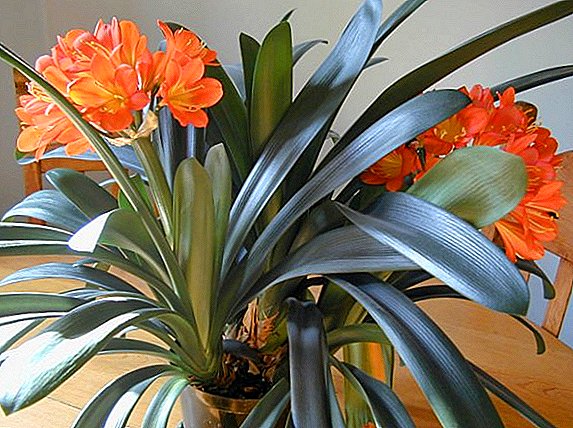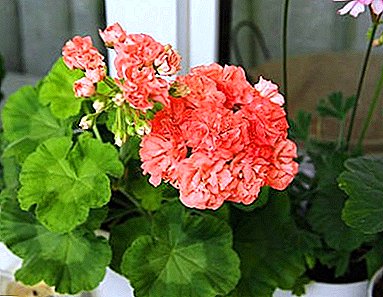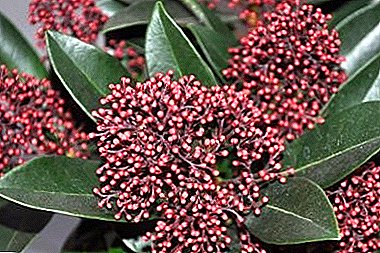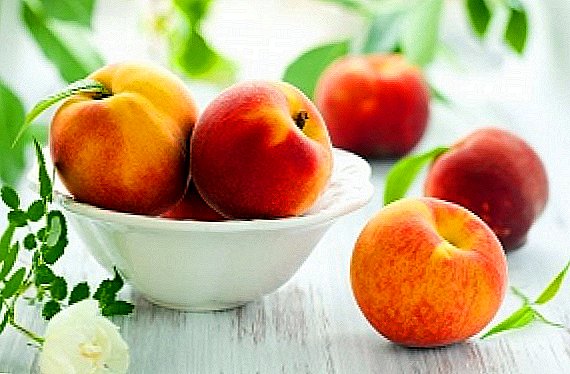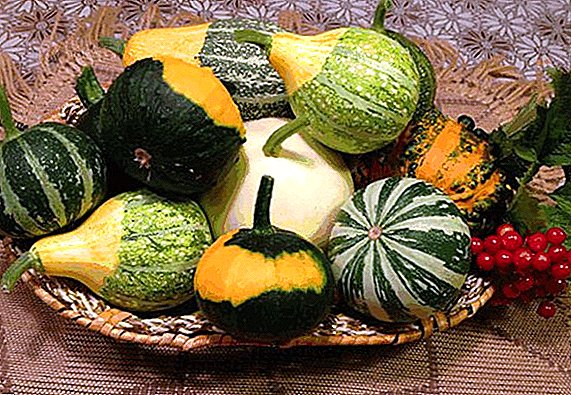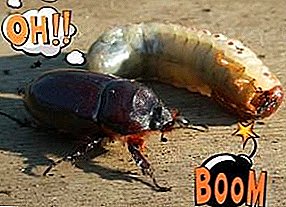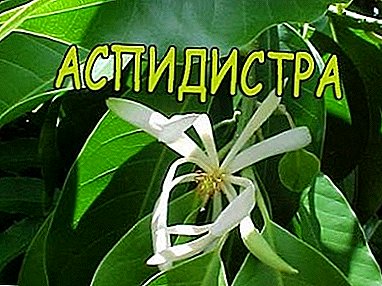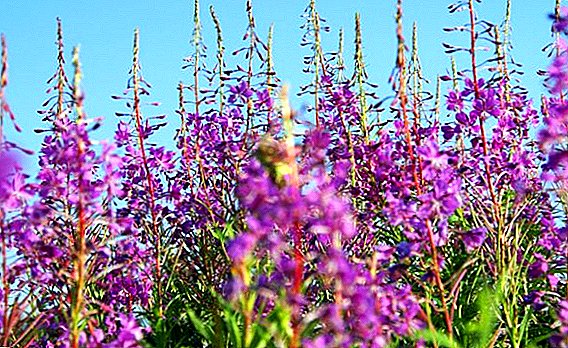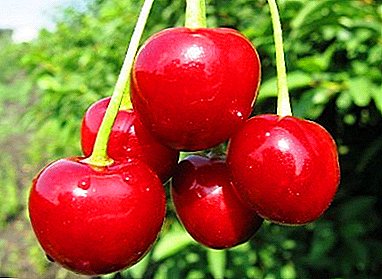
Cherries are cultivated by man for a long time. During this time, a wealth of experience has been gained in effectively cultivating this healthy and tasty fruit.
Of particular interest to scientists-breeders in terms of improving the culture popular among the people are varieties that have been sustainably pleasing for their crops and dietary properties for many decades.
One of these varieties is Lubskaya cherry. At present, it is grown by gardeners in many CIS countries.
Breeding history and breeding region
 The close relationship of this cherry variety with the history of gardening in the former Soviet Union is quite understandable.
The close relationship of this cherry variety with the history of gardening in the former Soviet Union is quite understandable.
The fact is that Lyubskaya is an old, Russian by origin, type of cherry.
He was bred many years ago as a result of the so-called national selection.
That is, there is neither exact data on the year and place of origin of this cherry, nor any definitely known individual authorship, except for authorship of many anonymous gardener enthusiasts, who gradually, year after year, improved the properties of this variety in relation to the difficult climatic conditions of central Russia.
The very first scientific description of the variety in the mid-1930s was made by an outstanding Russian natural scientist, doctor of agricultural sciences. Nikolai Ivanovich Kichunov (1863-1942).
He, in particular, pointed out that Lyubskaya has long been bred by gardeners in Kursk Province and that there this cherry is considered a local fruit crop.
Subsequently, the state authorities and scientists paid more attention to this variety, its taste and product qualities. After a series of breeding studies in 1947
 Lyubskaya was included in the USSR State Varietal Register.
Lyubskaya was included in the USSR State Varietal Register.
At the same time, the variety became widespread in horticultural farms in most parts of the Russian Federation, but especially in farms Central, Central Black Earth, North-West, Middle Volga, Lower Volga and North Caucasus regions of Russia.
Gardeners appreciate the Lubskaya cherry variety for its relatively late ripening periods, high yield and good winter hardiness.
Lebedyanskaya, Shubinka and Generous are also able to tolerate low temperatures well.
Appearance of cherry Lyubskaya
Cherry Lyubskaya has the following characteristic species parameters:
Tree
The plant of this species is a typical bushy cherry. She is short, medium tall highly rarely stretched to a height of more than 2.5 meters. The bush cherries also include Griot Moscow, Ashinskaya Stepnaya.
The Lubská амбtambe covers the bark of a grayish-brown hue, on which one can often notice pronounced cracks.
Crown, branches. A fairly wide crown is usually not distinguished by increased density. In shape, it is very similar to the ball.
 Formed by, as a rule, a few wilted and curved branches, the bark of which has a brown color with a dull silver coating.
Formed by, as a rule, a few wilted and curved branches, the bark of which has a brown color with a dull silver coating.
This variety is characterized by the deviation of young annual branches from the main trunk at an angle of about 45 degrees.
Shoots. Since Lubskaya is a bush plant, it is on the annual branches that its fruits are formed. The rounded, developing on the shoot, with a small cone at the tip, the buds deviate somewhat from the processes.
Leaves. They are fairly dense formations with a dark green color, with no apparent shine.
On average, an adult leaf, characterized by the shape of a narrowed oval (elongated egg) and a pointed tip, has a size of 87 x 50 mm.
Edges of a sheet plate are jagged. At the base of the sheet, small streaks of a yellowish-brown hue are distinguishable.
Inflorescences The diameter of the inflorescence is from 30 to 34 mm. The inflorescence consists of 3-4 flowers with a diameter of 3-3.5 mm with rounded-concave petals, the surface of the petals is slightly corrugated.
The flowers are kept on the branches by means of pedicels 25-30 mm long. The flowering period takes 7-9 days.
Fruit
One average cherry varieties Lyubskaya weighs about 4 grams, but there are also larger and more massive specimens. The fruits are concentrated in brushes of 2-4 berries, but single berries are not uncommon. Large berries demonstrate and Volochaevka, Lighthouse and Podbelskaya.
 The main color of the ripe fruit is dark red, the fruit is covered with a thin, glossy skin. Usually fruits have a rounded ovoid shape. The flesh is quite dense, very juicy, can be both dark red and light red.
The main color of the ripe fruit is dark red, the fruit is covered with a thin, glossy skin. Usually fruits have a rounded ovoid shape. The flesh is quite dense, very juicy, can be both dark red and light red.
Inside the pulp has an oval bone, the mass of which is approximately 6-8% of the total mass of the fetus. Fruits firmly (both young and mature) are kept on the branches with the help of stem, reaching a length of 3 cm.
Next, you will see in the photo how the Lubskaya cherry variety looks and read its description.
A photo





Characteristics of a variety
This variety is self-fertile fruit culture. This means that Lubskaya cherry is fertilized by its own pollen and does not need additional pollinators. Varieties of the same age, in memory of Enikeeva and Volochaevka also possess self-fertility.
Due to this property of the plant, the gardener may not be afraid of changeable weather during the flowering period of the tree, when, due to unexpected frosts, the bees remain in their hives and do not participate in cross-pollination.
A gardener who grows this tree in a cool Russian climate can not be very wary of the cold spring for another reason.
 Lyubskaya is a plant mid bloom, and therefore the frosts that lasted until spring do not greatly affect the quality of the ovary.
Lyubskaya is a plant mid bloom, and therefore the frosts that lasted until spring do not greatly affect the quality of the ovary.
Therefore, those who cultivate this cherry, do not remain without a crop, even when the whims of nature do not allow harvesting from early flowering trees.
At the same time, this cherry is skoroplodnaya. Fruits are ripening by the end of July - the beginning of August.The same sign has a grade Ashinskaya Stepnaya.
At the same time, if all agrotechnical requirements of proper plant care were met, an adult tree can give in one season more than 35 kg of high-quality berries. And it begins to fully fruit from age 2-3 years after landing.
Meanwhile, one positive quality - the ability to produce high yields - entails another, but with a minus sign.
Due to the exhaustion of the tree, the forces of which are wasted on impressive harvests, Lubskaya cherry is not very durable.
Such high yields are demonstrated by such varieties as Ural Rubinovaya, Nadezhda, Mayak and Tamaris.
Yielding on this indicator to many other varieties, the tree of this species on average lives about 14-17 years old, and only particularly favorable conditions can extend his life to 25-30 years.
He has another flaw, which should pay close attention. Although Lubskaya is generally different good frost resistance, its "weak point" in winter is tree bark.
Such varieties as Lebedyanskaya, Volochaevka, and Chokoladnitsa are not bad against cold weather.
This is especially true of young trees, the severe frostbite of the bark of which already in the first years of life can lead to severe burns and even death of the whole individual.
 As for the commodity-taste qualities of this cherry, the opinions of experts here diverge. Some consider the taste of sweet and sour berries to be very pleasant, very refreshing, others call it very mediocre.
As for the commodity-taste qualities of this cherry, the opinions of experts here diverge. Some consider the taste of sweet and sour berries to be very pleasant, very refreshing, others call it very mediocre.
Perhaps it is precisely because of this duality that the harvest of Lyubskaya is mostly for processing — for the production of various juices, compotes, jams, preserves.
Nevertheless, it must be admitted that cherries of this variety, like fruits of other cherry species, are very useful due to the significant content of vitamins in them and a balanced ratio of sugars and organic acids.
In the conditions of central Russia, the composition of basic chemicals is as follows:
| Composition | amount |
|---|---|
| Sahara | 9,5% |
| Free acids | 1,6% |
| Dry matter | 14,6% |
| Ascorbic acid | 20 mg per 100 g |
Planting and care
Usually in nurseries you can buy seedlings at the age of one year. Young animals land in early spring in an open area, which is illuminated all day by sunlight.
It is necessary that the landing site prevail sandy, sandy or loamy soil.
It is also important that groundwater does not come close to the surface of the earth in this place, which can damage the root system.
 During rooting of the seedling it is necessary to cut the tip. After the primary pruning over the root should remain not more than half a meter.
During rooting of the seedling it is necessary to cut the tip. After the primary pruning over the root should remain not more than half a meter.
Such a formation will give impetus to the growth of the tree, not up, but in width.
Such a configuration of the crown is useful for various reasons, including it is very suitable for quick and convenient harvesting.
Usually for planting cherry seedlings dig up hole 50-60 cm in diameter and 40-60 cm deep.
The earth extracted by digging, mixed with organic and mineral fertilizers. The resulting mixture is then used in the addition of the roots of the tree.
After the seedling is installed in the hole, and its root is covered with earth, the area around the trunk of a planted individual with a radius of 30-40 cm is carefully tamped down with feet or improvised means.
Landing place watered with 2-3 buckets of separated water. Plot a little sagging land mulch sawdust and humus, a layer which should be 2-3 cm.
It should be noted that the variety Lyubskaya very picky about soil quality. All subsequent years of the tree life should provide him with adequate nutrition.
 Especially good this variety reacts to mineral dressing in the spring. Regular watering of the tree is required.
Especially good this variety reacts to mineral dressing in the spring. Regular watering of the tree is required.
It is also necessary to constantly monitor the condition of his crown. Despite the fact that the crown of Lubskoy is most often quite rare, Do not allow the dominance of dry and overgrown branches.
Diseases and pests
Lyubskaya, like other plants of this culture, common in central Russia, in the winter period may be exposed to invasions of hungry rodents.
Of the diseases that cherry trees are usually prone to, the most dangerous for Lubskaya is fungal disease coccomycosis.
Attacking the plant, the causative agent of this disease - the fungus Sossomuse s hiemalis - manifests itself reddish spots on the leaves and their massive and too early fall.
Without such an important component of normal life, as the leaves, the plant quickly weakens and after a while may die if you do not start treatment.
It consists in processing tree branches fungicides.
 Treatment with this substance is three times a season: the first time - on the eve of bud break, the second time - during flowering, the third time - two or three weeks after flowering.
Treatment with this substance is three times a season: the first time - on the eve of bud break, the second time - during flowering, the third time - two or three weeks after flowering.
There are varieties of cherries, especially resistant to fungal diseases. Such as Novella, In memory of Vavilov, Tsarevna, Podbelskaya, for example.
Thus, before getting to the table or to the pan for making jam, the cherry must pass through the caring hands of the gardener. These hands, as well as knowledge of the fundamentals of agricultural engineering and experience guarantee excellent results.


